Introduction - Tips To Cook Healthy Recipes at Home
Welcome to a world where cooking is not just a daily chore, but a delightful journey towards health and wellness. In this guide, I'm excited to share with you an array of tips to cook healthy recipes right in the comfort of your home. Whether you're a seasoned home chef or just starting out, these insights are designed to inspire and empower you to create meals that are not only delicious but also nourishing.
Empower Your Health Journey – Explore My Free Apps for a Vibrant, Healthier Lifestyle Today!
We'll explore the secrets of choosing the right ingredients, employing smart cooking methods, and embracing the joy of cooking wholesome meals. So, grab your apron, and let's start this culinary adventure together, transforming your kitchen into a haven of health and happiness!
Mindful Ingredient Selection
Mindful Ingredient Selection is the main purpose of healthy cooking at home. It begins with choosing fresh, organic produce whenever possible, focusing on the quality and nutritional value of each item you bring into your kitchen. This means being selective about your fruits, vegetables, grains, and proteins, ensuring they are as close to their natural state as possible.
- Prioritize Freshness: Choose ingredients that are fresh and in season. For instance, selecting ripe tomatoes and crisp lettuce for a salad ensures a burst of natural flavor.
- Organic Options: Whenever feasible, opt for organic produce. Organic apples or carrots, for instance, are free from harmful pesticides.
- Local Sourcing: Support local farmers by buying local produce. Freshly picked strawberries from a nearby farm can make a significant difference in taste and nutrient content.
- Whole Grains: Incorporate whole grains like quinoa, brown rice, or whole wheat in your meals for added fiber and nutrients.
- Lean Proteins: Choose lean protein sources such as chicken breast, fish, or plant-based proteins like lentils and chickpeas.
- Healthy Fats: Include sources of healthy fats like avocados, nuts, and olive oil, which are essential for a balanced diet.
- Diversity in Colors: A variety of colors on your plate means a range of nutrients. Combine green spinach, red bell peppers, and yellow corn for a nutrient-rich meal.
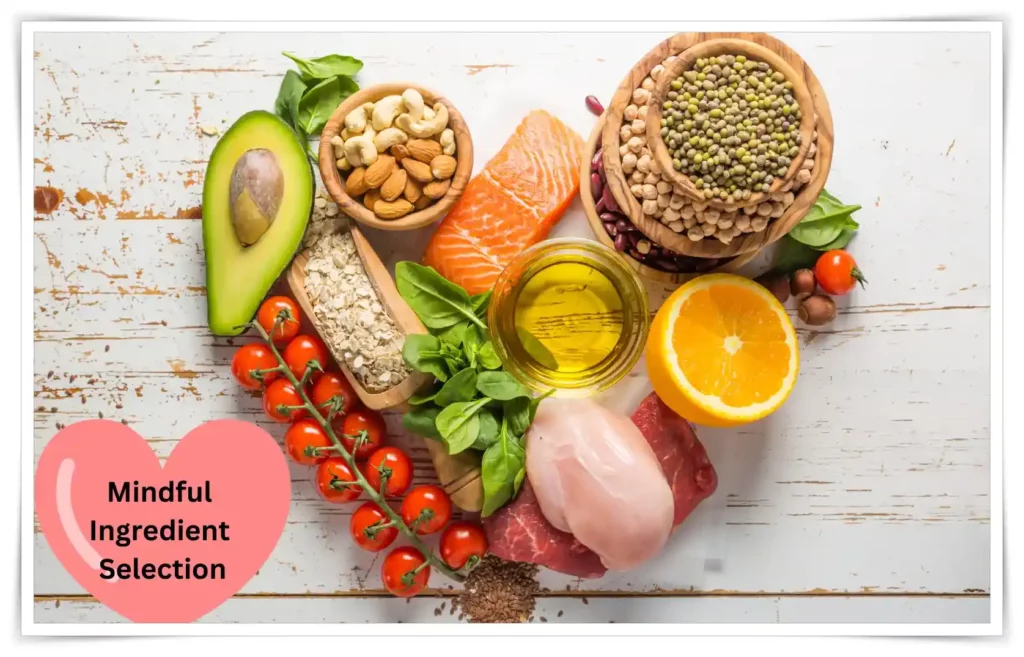
How To Find Healthier Options While Grocery Shopping
Want to make smart food choices but confused by all the health claims, messages and logos on foods? Use these tips to avoid the brain strain while shopping online or in person at the store.
- Read food nutrition labels, even for so-called “healthier” foods. Ingredients and nutrient content can vary a lot by brand and preparation. When there’s more than one choice, compare labels. Choose the item with the lowest amounts of sodium, saturated fat, trans fat and added sugars.
- Beware of sneaky ingredients. For example, sodium and added sugars go by many different names, making it harder to tell just how much is in there.
- Choose frozen, canned or dried produce when fresh isn’t available or practical. It can be just as nutritious as fresh, and will last longer. Choose canned fruit packed in water, light syrup or its own juice. With canned and frozen vegetables, choose the product with the lowest amount of sodium. Heavy syrups and sauces can add unwanted ingredients to your healthy fruits and veggies.
- Choose whole-grain foods. Lots of products claim to be, but there’s a simple way to know for sure. Look for the word “whole-grain” (or “whole” followed by the grain name) as the first item in the ingredients list. And we’re talking more than just bread. Include crackers, cereals, tortillas, pasta and other grain foods in your whole-grain quest.
Try These Easy To Cook Healthy Recipes:
Here's a list of 20 healthy recipes featuring nutritious ingredients, each with a link for more details:
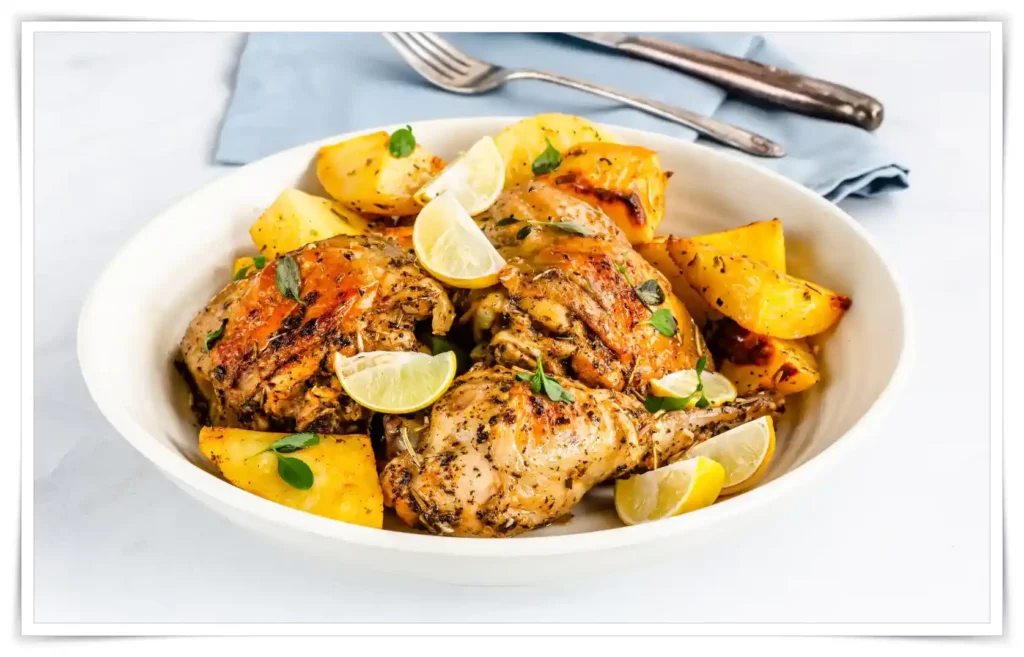
- Grilled Lemon Herb Chicken
- Quinoa Salad with Roasted Vegetables
- Salmon and Avocado Sushi Bowls
- Mango and Black Bean Quinoa Salad
- Vegetarian Chickpea Stir-Fry
- Greek Yogurt Parfait with Fresh Berries
- Sweet Potato and Kale Frittata
- Baked Cod with Lemon and Herbs
- Quinoa and Black Bean Stuffed Peppers
- Cauliflower Crust Margherita Pizza
- Lentil and Vegetable Soup
- Zucchini Noodles with Pesto and Cherry Tomatoes
- Healthy Chicken Lettuce Wraps
- Broccoli and Cheddar Quinoa Casserole
- Stuffed Bell Peppers with Turkey and Quinoa
- Chia Seed Pudding with Almond Milk
- Mediterranean Chickpea Salad
- Turkey and Vegetable Skewers
- Cucumber and Hummus Sandwiches
- Spinach and Feta Stuffed Chicken Breast

Tips To Cook
- Steaming: Preserves nutrients and keeps the natural flavors intact. Steam vegetables like broccoli or fish to retain their vitamins and minerals.
- Roasting: Enhances flavors while minimizing the use of extra fats. Try roasting root vegetables or chicken for a delicious, healthy meal.
- Grilling: Ideal for a smoky flavor without needing excess oil. Grill peppers, zucchini, or lean meats for a tasty and nutritious option.
- Sautéing with Minimal Oil: Use a non-stick pan and a small amount of olive or avocado oil to sauté veggies or lean meats, keeping meals light and heart-healthy.
- Slow Cooking: Perfect for retaining the flavor and nutrients in soups and stews. Slow cook beans or lean cuts of meat for tender, healthful dishes.
- Baking: Substitute healthier ingredients in baking, like whole wheat flour or applesauce instead of butter, for healthier homemade treats.
Each of these methods offers a way to cook healthily, bringing out the best in your ingredients while maintaining nutritional value and taste.
Healthy Fats, Smart Choices in Healthy Recipes
Incorporating healthy fats into your diet is not just about adding richness to your meals; it's about making smart choices that benefit your overall health. Here are some key sources of healthy fats:

- Avocados: Packed with monounsaturated fats, avocados are versatile and can be used in salads, sandwiches, or even as a healthy substitute for butter in baking.
- Olive Oil: Rich in heart-healthy monounsaturated fats, olive oil is perfect for salad dressings, drizzling over cooked vegetables, or for light sautéing. Extra virgin olive oil also contains antioxidants and anti-inflammatory properties.
- Nuts and Seeds: Almonds, walnuts, flaxseeds, and chia seeds are not only rich in omega-3 fatty acids but also provide fiber, protein, and essential minerals. They're great as a snack, sprinkled over breakfast cereals, or incorporated into baking.
- Fatty Fish: Salmon, mackerel, sardines, and trout are excellent sources of omega-3 fatty acids, crucial for brain and heart health. Incorporating these into your diet twice a week can provide significant health benefits.
- Dark Chocolate: Choose dark chocolate with a high cocoa content for a treat that's rich in antioxidants and healthy fats. It's a delicious way to satisfy sweet cravings in moderation.
- Coconut Oil: While higher in saturated fat, coconut oil contains medium-chain triglycerides (MCTs), which are metabolized differently and can provide quick energy. It's great for occasional use in specific recipes, like curries or for baking.
- Nut Butters: Peanut, almond, or cashew butter are not only tasty but also pack a punch of healthy fats. They're great on whole-grain toast, in smoothies, or even in sauces.
- Greek Yogurt: Full-fat Greek yogurt is a good source of protein, calcium, and healthy fats. It's a versatile ingredient that can be used in breakfasts, dips, or dressings.
Remember, while these fats are healthy, they are also high in calories, so moderation is key. By integrating these smart fat choices into your diet, you not only enhance the flavor and texture of your meals but also contribute positively to your health and well-being.
Seasoning Sensibly in Cook at Home
Seasoning sensibly in cooking is crucial for enhancing flavors while maintaining a healthy profile in your dishes. Here's how you can do it:
- Expand Your Herb and Spice Palette: Utilize a wide range of herbs and spices like rosemary, parsley, coriander, paprika, and ginger. These not only add unique flavors but also contain health benefits, including anti-inflammatory properties.
- Citrus Zest and Juice: The zest and juice from lemons, limes, and oranges can introduce a fresh, zesty flavor to dishes, reducing reliance on salt.
- Aromatic Vegetables: Garlic, onions, shallots, and leeks are great for adding depth to your dishes. Their strong flavors mean you can use less salt.
- Vinegars and Acids: Incorporate various vinegars, as well as natural acids like lemon juice or tamarind, to add a bright, tangy element to your dishes.
- Salt Alternatives: Consider salt substitutes or lower-sodium versions of sauces and condiments. Nutritional yeast, for example, can impart a cheesy, savory flavor without the added sodium.
- Freshness Over Processed: Whenever possible, choose fresh ingredients over processed ones, as they often contain less sodium and added sugars.
- Experiment with Global Flavors: Embrace seasonings from different cuisines, like Italian herbs, Indian spices, or Asian sauces, to add diversity and flavor without excessive salt or fat.
- Mindful Tasting: Regularly taste your food as you cook, adjusting seasonings gradually. This practice helps you become more aware of the flavors and reduces the tendency to over-season.
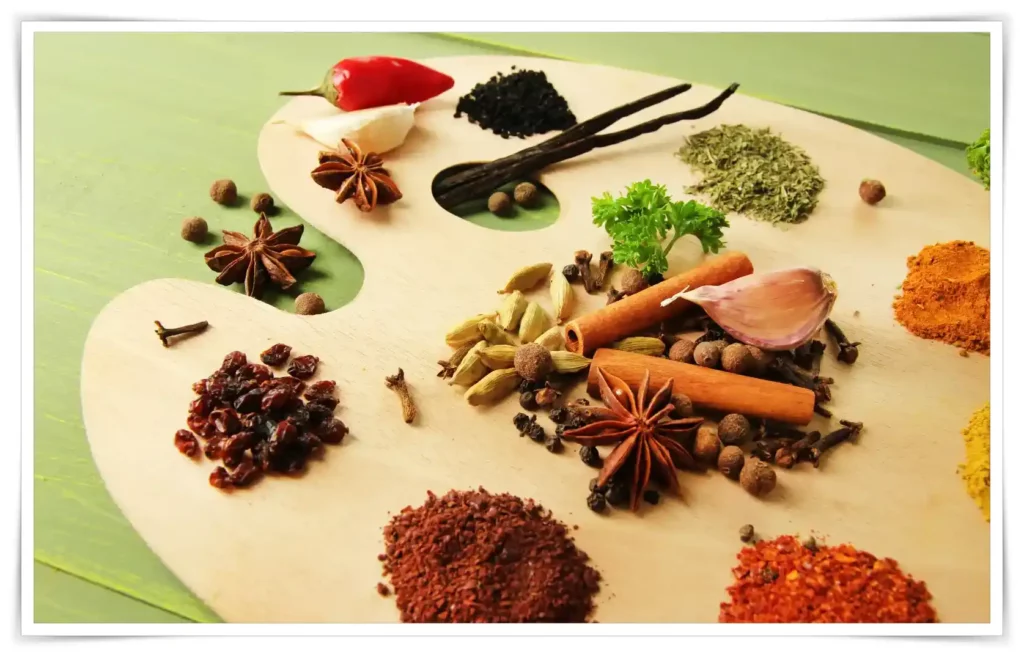
By focusing on a variety of natural, flavorful ingredients and seasoning techniques, you can significantly enhance the taste and healthfulness of your meals. This approach allows you to enjoy rich flavors without relying heavily on unhealthy additives like excess salt or artificial flavorings.
Portion Control
Portion control is a key aspect of healthy eating, ensuring that you enjoy your meals while maintaining a balanced diet. Here's how you can master it:
- Understand Serving Sizes: Familiarize yourself with standard serving sizes. For instance, a single serving of cooked meat should be about the size of a deck of cards.
- Use Smaller Plates: Eating from smaller plates can help control portions without feeling deprived. This tricks the brain into thinking you're eating more than you actually are.
- Listen to Your Body: Pay attention to hunger and fullness cues. Eating slowly allows your body time to signal when it's full.
- Avoid Eating from the Package: Serve yourself a portion on a plate or bowl instead of eating directly from the package, which can lead to overeating.
- Meal Prep: Preparing meals in advance helps control portion sizes and prevents overeating.
- Balance Your Plate: Ensure your meals have a balance of vegetables, proteins, and whole grains. Half of your plate should be vegetables, a quarter should be protein, and the remaining quarter should be whole grains.
- Drink Water Before Meals: Drinking a glass of water before eating can help control hunger and prevent overeating.
- Mindful Eating: Be present during your meals, savoring each bite, which can prevent mindless overeating.
- Avoid Buffet-Style Eating: At home, avoid family-style dining where food is easily accessible for seconds. Instead, plate your meal in the kitchen.
- Limit Distractions: Eating while watching TV or working can lead to overeating. Focus on your meal to better regulate portion size.
By practising these strategies, portion control becomes an effortless part of your eating habits, contributing to a healthier lifestyle and better weight management. Remember, it's not just about eating less; it's about eating right.
Colorful Plates, Nutrient-Rich Delights

Embracing a rainbow of colors on your plate is not just visually appealing, but it's also a cornerstone of nutritious eating. Each color in fruits and vegetables represents different nutrients and health benefits:
- Red Foods: Tomatoes, red peppers, and strawberries are rich in lycopene and vitamin C, which are known for heart health and immune support.
- Orange and Yellow Foods: Carrots, squash, and citrus fruits are packed with beta-carotene and flavonoids that promote eye health and a strong immune system.
- Green Foods: Leafy greens like spinach and kale, as well as broccoli and green beans, are loaded with vitamins A, C, and K, along with iron and calcium, which are essential for bone health and blood function.
- Blue and Purple Foods: Blueberries, eggplants, and purple cabbage contain anthocyanins, which have antioxidant properties that may support brain health and reduce inflammation.
- White and Brown Foods: Foods like garlic, onions, and mushrooms offer allicin and selenium, which are known for their immune-boosting and anti-cancer properties.
By incorporating a variety of colors on your plate, you ensure a diverse intake of essential nutrients. This not only helps in preventing nutritional deficiencies but also supports various bodily functions and overall health.
Additionally, colorful meals encourage healthier eating by making the food more enticing and enjoyable. It's a delightful way to inspire children and adults alike to consume more fruits and vegetables.
Remember, the deeper the color, the richer the nutrient content. So next time you're preparing a meal, challenge yourself to include as many colors of the rainbow as you can. This approach to meal planning is not only beneficial for your health but also turns each meal into a vibrant, delicious masterpiece.
Strategic Meal Planning
Strategic meal planning is an effective way to ensure you maintain a balanced diet, save time, and reduce food waste. Here's how to do it effectively:
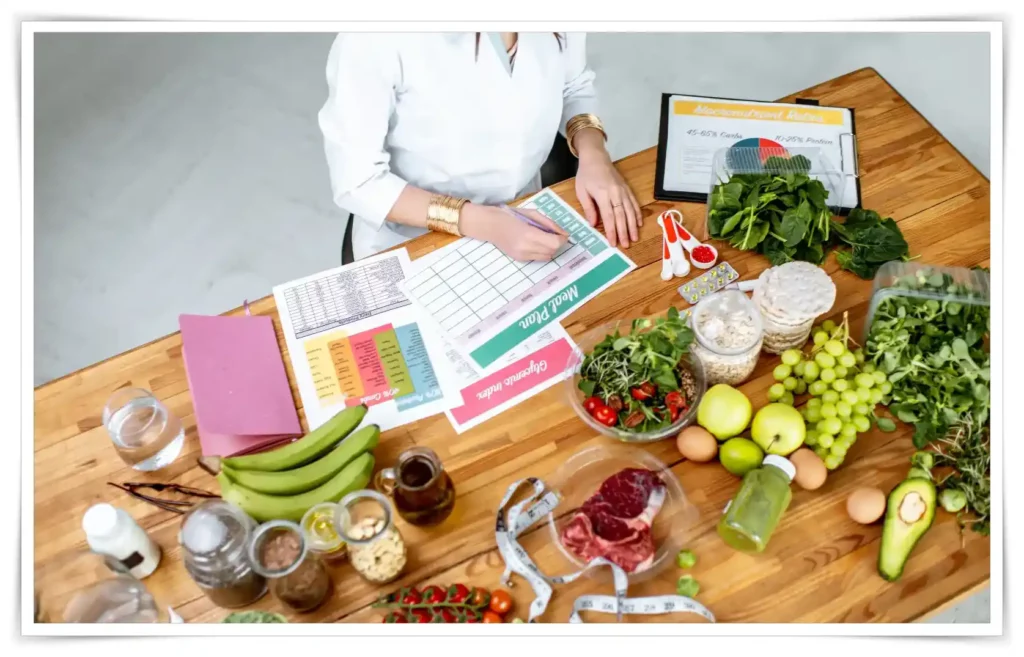
- Set Your Goals: Begin by identifying your dietary goals. Are you aiming for weight loss, building muscle, or simply eating healthier?
- Plan Your Meals: Decide on your meals for the week. This includes breakfast, lunch, dinner, and any snacks. Ensure each meal is balanced with a good mix of protein, carbs, and fats.
- Make a Shopping List: Based on your meal plan, create a shopping list. This helps prevent impulse buys and ensures you have all the necessary ingredients.
- Prep in Advance: Prepare as much as you can in advance. Chop vegetables, cook grains, or marinate proteins. Meal prep saves time during busy weekdays.
- Consider Portion Sizes: When preparing meals, be mindful of portion sizes to avoid overeating.
- Incorporate Variety: To avoid dietary boredom, include a variety of foods in your meal plan. Try new recipes or cuisines to keep things interesting.
- Listen to Your Body: Be flexible with your meal plan. If you’re not feeling a particular meal, swap it with another day’s meal that's more appealing to you.
- Store Meals Properly: Use proper storage techniques to keep prepped meals fresh and safe to eat.
- Review and Adjust: Regularly review your meal plan and make adjustments based on what's working and what isn't.
Conclusion
Mastering the art of cooking healthy recipes at home involves much more than just following a recipe. It's about making mindful choices in ingredient selection, employing smart cooking methods, understanding the role of healthy fats, seasoning sensibly, and practising portion control. By infusing your meals with a spectrum of colors and engaging in strategic meal planning, you can create a dining experience that is both nutritionally rich and immensely satisfying. Remember, each step you take towards healthier cooking is a step towards a healthier lifestyle. So, embrace these practices, enjoy the process, and savor the delicious, healthful meals you create in your kitchen.
FAQs - Tips To Cook Healthy Recipes at Home

- What are some easy ways to start cooking healthier at home?
- Begin by incorporating more fresh fruits and vegetables, choosing whole grains, and using lean protein sources. Experiment with herbs and spices for flavor instead of relying heavily on salt and fat.
- How can I make sure my meals are well-balanced?
- Aim for a variety of foods in each meal: half the plate with vegetables and fruits, a quarter with lean protein, and a quarter with whole grains.
- Are frozen vegetables and fruits healthy?
- Yes, frozen fruits and vegetables can be just as nutritious as fresh ones. They're a convenient and often more affordable option.
- How can I reduce the amount of fat in my cooking?
- Use cooking methods like grilling, steaming, or baking. Opt for healthy fats like olive oil in small amounts and try using herbs and spices for flavor.
- What are some healthy snack options?
- Snacks like fresh fruit, nuts, yogurt, and whole grain crackers with hummus are healthy choices.
- How can I make healthy eating more affordable?
- Buy seasonal produce, consider frozen or canned options, purchase in bulk, and plan meals to reduce waste.
- How can I eat healthily with a busy schedule?
- Meal prepping can be a lifesaver. Set aside time to prepare and store meals or meal components for the week.
- Is it possible to eat healthily without sacrificing taste?
- Absolutely! Healthy eating doesn't mean bland food. Experiment with various herbs, spices, and cooking techniques to enhance flavors.
I hope this guide inspires you to embark on your own journey of healthy home cooking. Do you have any favorite healthy recipes or tips to share? Have you tried any of these methods in your kitchen? Share your experiences, tips, or questions in the comments below. Let's create a community of health-conscious home chefs!
Link to Related Articles:
For more insights into healthy cooking and eating, check out these articles:
- From Kitchen to Gut: The Health Benefits of Home Cooking: Dive deeper into how cooking at home positively impacts your health.
- Ideal Method for Cooking Fresh Vegetables: Watch this informative video for tips on preserving the nutritional value and flavor of vegetables in your cooking.




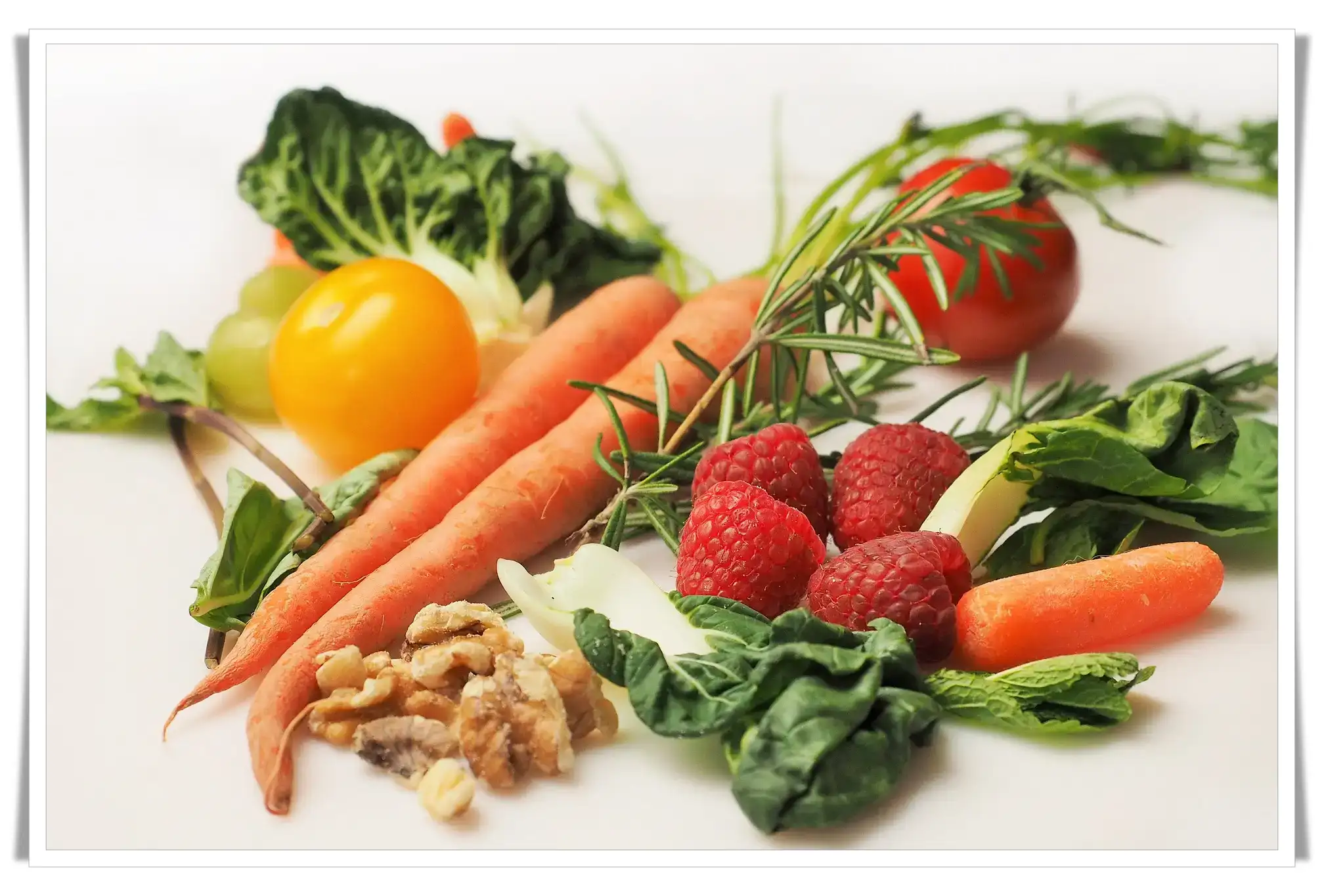
I loved you even more than you’ll say here. The picture is nice and your writing is stylish, but you read it quickly. I think you should give it another chance soon. I’ll likely do that again and again if you keep this walk safe.
I do agree with all the ideas you have introduced on your post. They are very convincing and will definitely work. Still, the posts are very short for newbies. May just you please prolong them a little from subsequent time? Thank you for the post.
I do trust all the ideas you’ve presented in your post. They are really convincing and will definitely work. Nonetheless, the posts are too short for newbies. May just you please lengthen them a bit from next time? Thank you for the post.
I loved even more than you will get done right here. The picture is nice, and your writing is stylish, but you seem to be rushing through it, and I think you should give it again soon. I’ll probably do that again and again if you protect this hike.
I loved even more than you will get done right here. The picture is nice, and your writing is stylish, but you seem to be rushing through it, and I think you should give it again soon. I’ll probably do that again and again if you protect this hike.
It was great seeing how much work you put into it. Even though the design is nice and the writing is stylish, you seem to be having trouble with it. I think you should really try sending the next article. I’ll definitely be back for more of the same if you protect this hike.
Excellent blog here Also your website loads up very fast What web host are you using Can I get your affiliate link to your host I wish my web site loaded up as quickly as yours lol
Although I believe every thought you have for your post is excellent and will undoubtedly be successful, the postings are too brief for new readers. Maybe you could extend them a little bit the next time? I’m grateful for the post.
Thanks I have just been looking for information about this subject for a long time and yours is the best Ive discovered till now However what in regards to the bottom line Are you certain in regards to the supply
you are truly a just right webmaster The site loading speed is incredible It kind of feels that youre doing any distinctive trick In addition The contents are masterwork you have done a great activity in this matter
naturally like your web site however you need to take a look at the spelling on several of your posts. A number of them are rife with spelling problems and I find it very bothersome to tell the truth on the other hand I will surely come again again.
Wow, wonderful blog structure! How long have you ever been blogging for?
you make running a blog look easy. The total look of your
website is excellent, let alone the content!
You can see similar: sklep online and here sklep internetowy
atorvastatin 40mg cheap buy generic lipitor online order lipitor online cheap